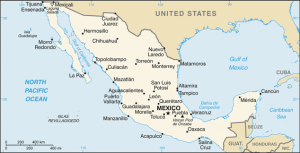The number of locally acquired chikungunya cases in Mexico have climbed to 74 in epidemiological week 49 ending Dec 5. The North American country, south of the border, saw its first autochthonous case of the painful mosquito borne viral disease the epidemiological week 45 ending Nov. 7, according to the Pan American Health Organization (PAHO).
Local transmission, or autochthonous means that mosquitoes in the area have been infected with chikungunya and are spreading it to people.
On December 2013, PAHO/WHO received confirmation of the first cases of autochthonous transmission of chikungunya in the Americas (Caribbean) on the island of St. Martin. Since that time, there has been 975,000 locally acquired cases in the Americas.
In the countries of Central America, just south of Mexico, more than 137,000 chikungunya cases have been reported with the vast majority seen in El Salvador. In the United States, 11 locally acquired cases have been reported in the state of Florida.
Chikungunya is characterized by an abrupt onset of fever frequently accompanied by joint pain, other symptoms or pain during chronic phase can include fatigue and depression. In addition,
it includes muscle pain, headache, nausea, and rash. Most patients recover fully, but in some cases the joint pain may be chronic. Serious complications are not common, but in older people, children and pregnant women the disease can get worse.
The virus is transmitted by the bites of infected Aedes aegypti and Aedes albopictus mosquitos, both present in the Americas. After the bite of an infected mosquito, onset of illness occurs usually between 3 and 7 days but can range from 2 to 12 days.
There are no specific drugs to cure the disease. Treatment is directed primarily at relieving the symptoms, including the joint pain. There is no commercial Chikungunya vaccine. For more infectious disease news and information, visit and “like” the Infectious Disease News Facebook page



One thought on “Chikungunya cases in Mexico climb to 74”